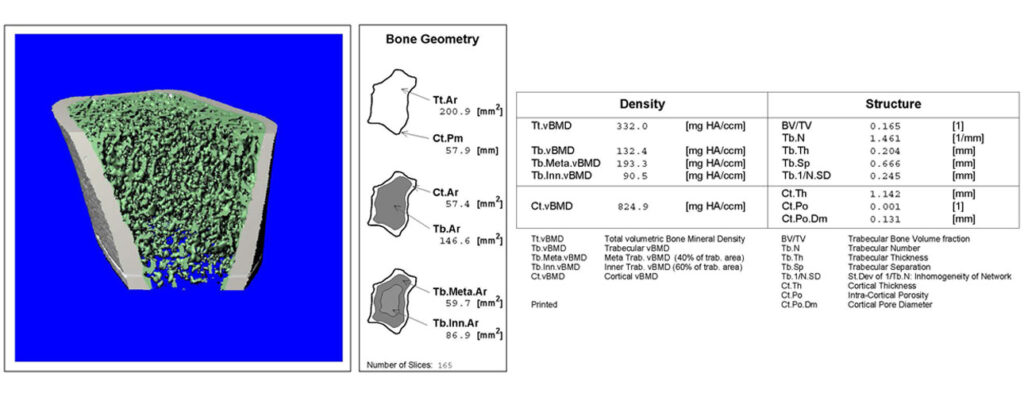The Division of Bone and Mineral Diseases, in the John T. Milliken Department of Medicine, offers state-of-the-art, high-resolution, peripheral quantitative computed tomography (HR-pQCT) for clinical research allowing non-invasive analysis of bone microarchitecture without the need for a bone biopsy.
What is HR-pQCT?
- HR-pQCT is a tomographic, X-ray imaging technique specifically designed to analyze bone microarchitecture in vivo.
- Radiation exposure is low, between (3–5 μSv) compared to standard chest X-ray (100 μSv), and even dual-energy X-ray absorptiometry (DXA) commonly used for bone density assessment (9 μSv).
- Analysis is done at peripheral sites: wrist and ankle
What Does HR-pQCT measure?
- Unlike DXA, which measures areal (bi-dimensional) bone density, HR-pQCT scans are used for a computerized reconstruction of the bone microstructure in 3 dimensions at high resolution.
- The tri-dimensional bone reconstruction allows the assessment of true, volumetric bone mineral density and other microstructural parameters, such as trabecular number and thickness, similar to a bone biopsy, without the need for an invasive procedure.
- HR-pQCT scans also resolve cancellous and cortical bone, allowing measurement of cortical parameters, such as cortical thickness and cortical porosity, which may be altered in pathologic conditions, even before or in the absence of measurable changes by DXA.
- A geometric assessment of bone strength can also be derived by finite element analysis of the 3D images.

How has HR-pQCT been used in clinical research?
- Periarticular bone resorption in inflammatory arthritis such as rheumatoid arthritis, lupus and the effect of treatment
- Variation in bone microarchitecture with sex, race/ethnicity, age, BMI
- Corticosteroid-induced osteoporosis, anti-osteoporotic medications (in postmenopausal women)
- Skeletal effects of diabetes, chronic renal failure, hypo and hyperparathyroidism
For further information, please contact:
Bridgett Toennies, RT (R)(CBDT)
Clinical Research Coordinator
Division of Bone and Mineral Diseases
btoennies@wustl.edu
Mahshid Mohseni, MD, MSCI
Director, Clinical Research Unit
Division of Bone and Mineral Diseases
mmohseni@wustl.edu
Washington University School of Medicine does not endorse or guarantee the accuracy of information contained on websites on non-affiliated external sources. Read the School of Medicine’s Policy on Links to Third-Party Websites to learn more.